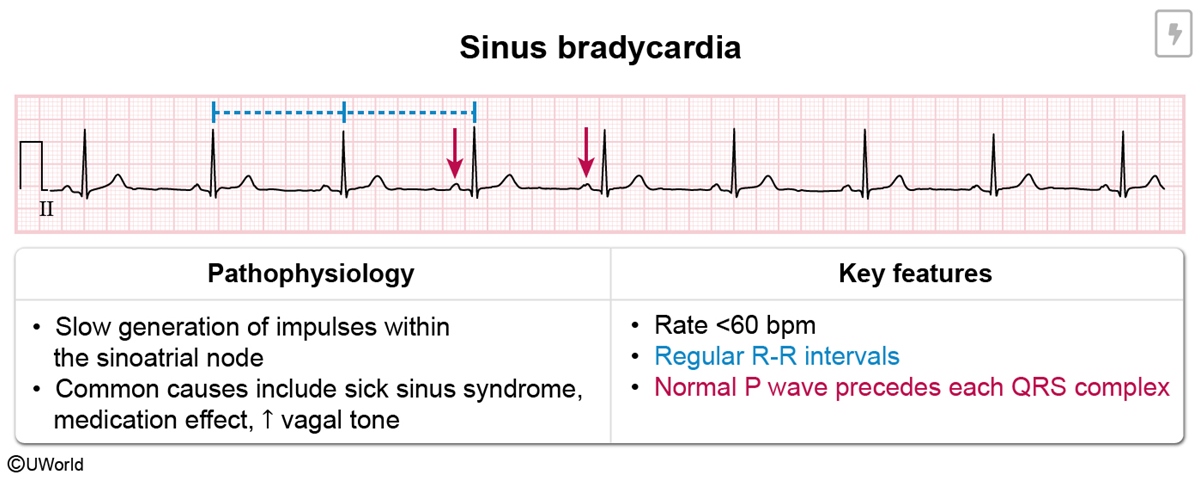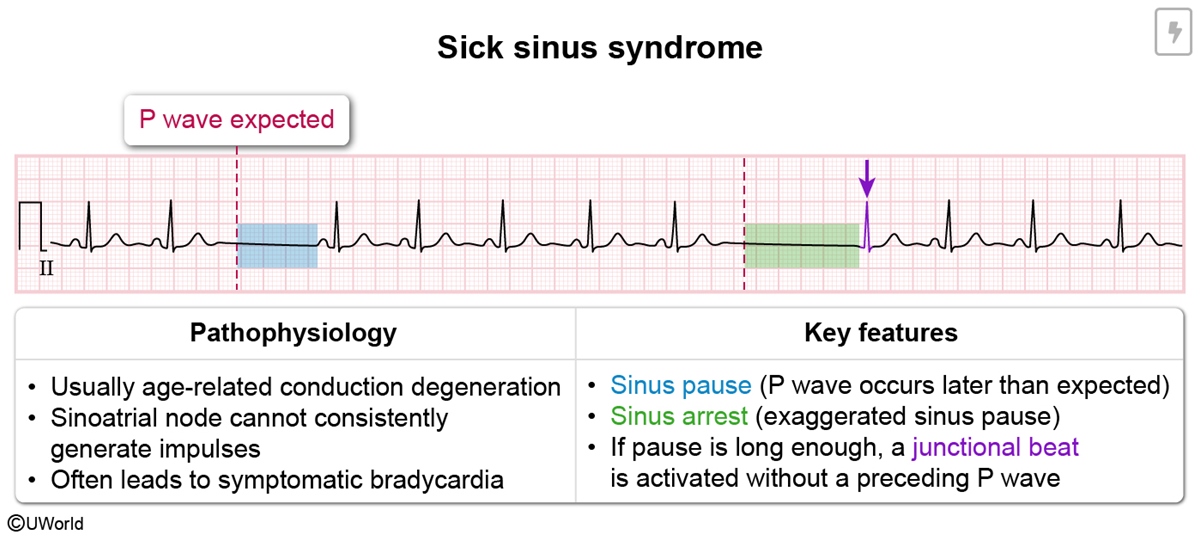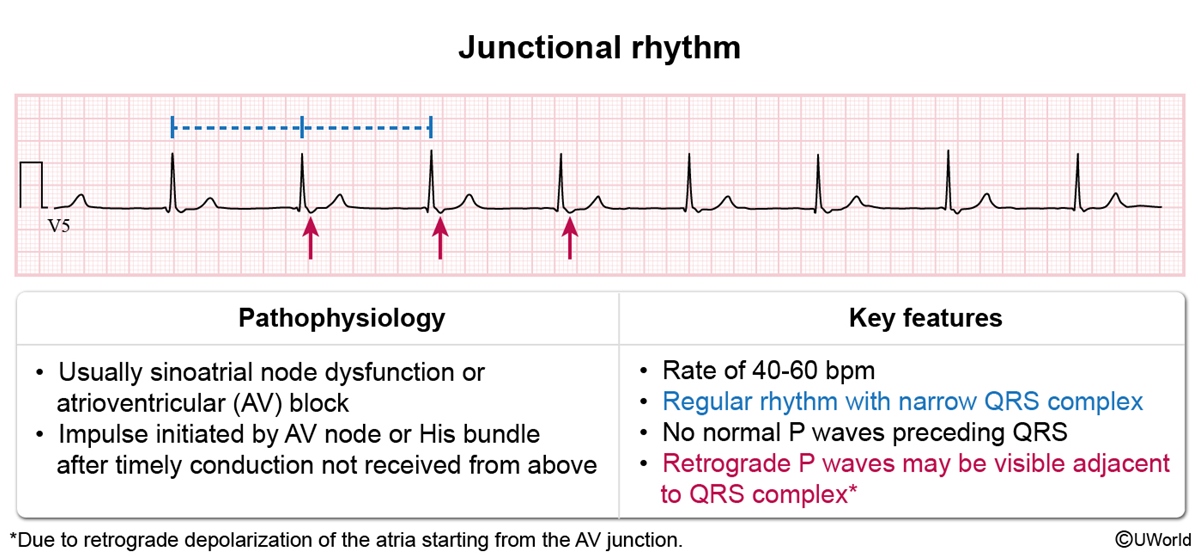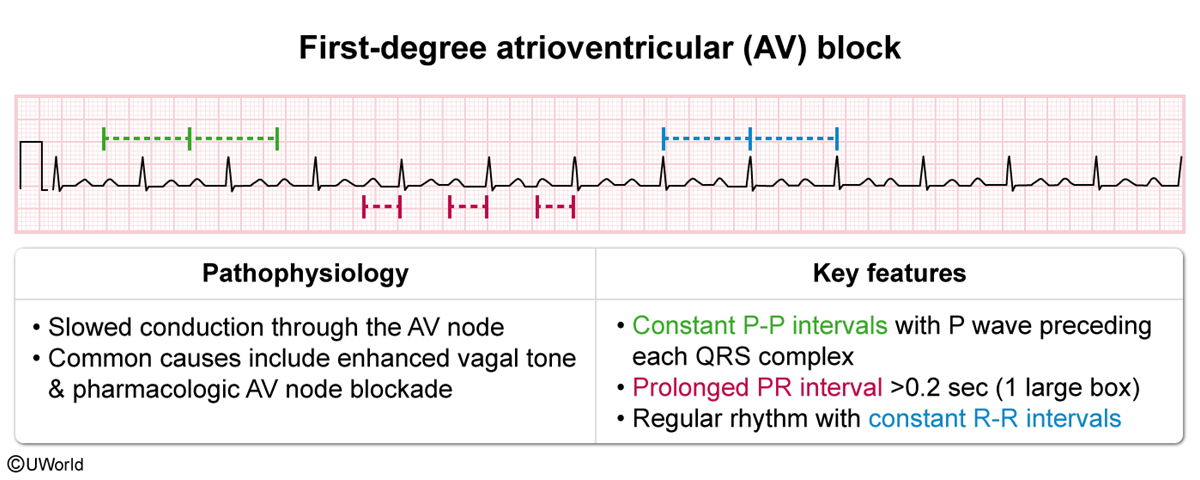Bradycardia And Atrioventricular Blocks
Article Sections
Introduction
Bradycardia is defined as a slow ventricular rate <60/min. It can occur as a normal physiologic response (eg, enhanced vagal tone due to endurance training) or a result of pathology (eg, age-related conduction system degeneration). Pathologic causes of bradycardia can lead to signs and symptoms of low cardiac output or, in severe cases, sudden cardiac arrest.
Pathophysiology
The sinoatrial node is the normal pacemaker of the heart, rhythmically generating impulses that travel through the conduction system and drive the coordinated contraction of the atria and ventricles. Normally, the sinoatrial node spontaneously generates impulses at a rate of 60-100/min, with the rate of impulse generation determined by the balance of parasympathetic and sympathetic input. Slow generation of sinoatrial node impulses usually occurs due to enhanced parasympathetic tone, pharmacologic effects, or sinus node dysfunction.
Continue Learning with UWorld
Get the full Bradycardia And Atrioventricular Blocks article plus rich visuals, real-world cases, and in-depth insights from medical experts, all available through the UWorld Medical Library.
Figures
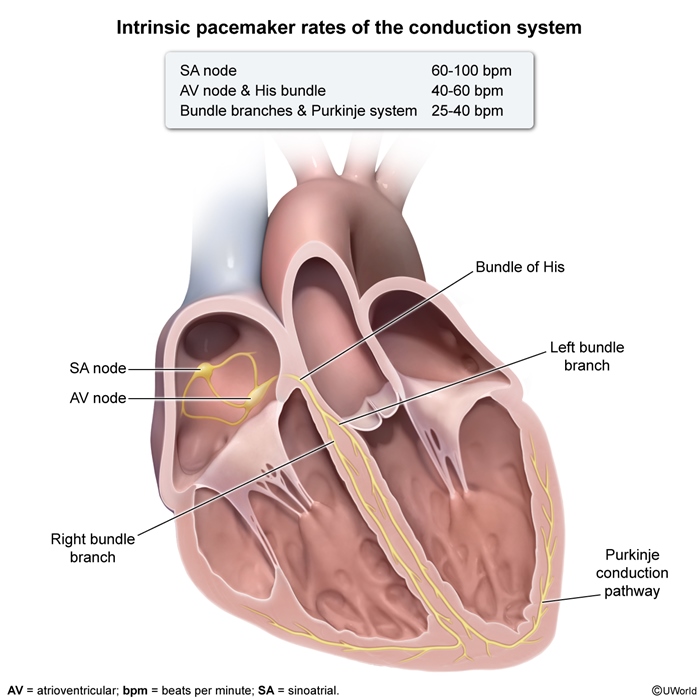
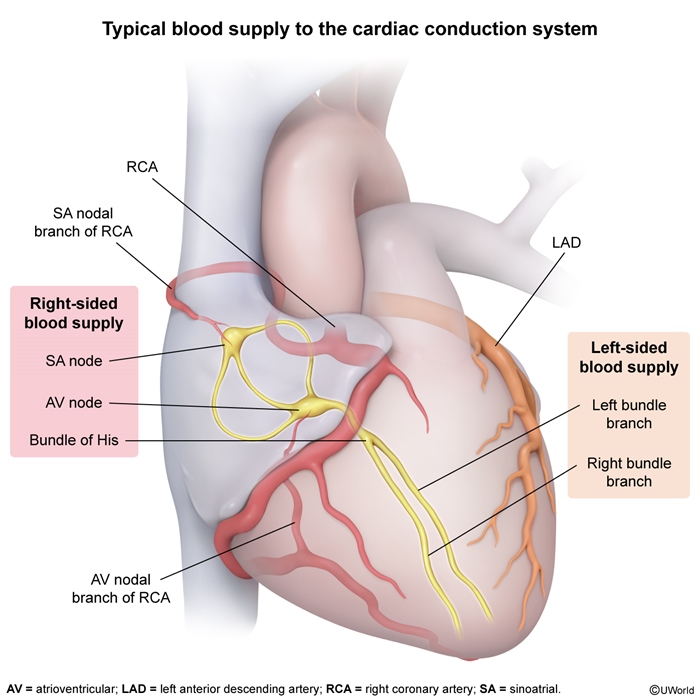
Images
